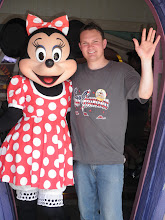- Introduction to Module 1: 'What's in a Name?'
Firstly, I introduced myself on 'Black Board' in the 'Discussion Board' link, on my first night of university study which was on the 30th of November 2009.
Next step, I read the unit outline then started on activity 'Thinking About Usernames'.
By the use a software,'namechk.com' I activated a username which was available for the, 'principally interested sites' delicious, twitter, blogger, wordpress, photopucket, flickr, linkedin, freindfeed and many more, which was on the name check site. - Topic 1.1 What is the Internet?
- Part One - Networking Basics
- The first video I watched is called, 'History of the Internet. It's about how the Internet developed from 1957 onwards... So much has developed during the past 50 years, from the ineffective "Batch Processing" to "Time Sharing", With the launch of the first unmanned satellite, Sputnik, by Russia in 1957 and so on. DARPA (Defence Advanced Research Project Agency started in Feb 1958. ARPANET (hardware), RAND Corporation in the US, National Physical Lab in England and the scientific network CYCLADES in France. PACKET SWITCHING started in England.The term 'Inter-net' was born from the French network CYCLADES. Feb 28th 1990 the ARPANET hardware was removed. (Bilgil, 2009)
- A Server/Client Network is a network between the server which is my 'service provider' and
the client which is 'me and my computer'.
A Peer to Peer Network is a client and server network. All nodes on the network are equal. File sharing services like Limewire and Skype are Peer to Peer networks.
TCP/IP protocols enables the movement of information between nodes on the network.
TCP means (Transmission Control Protocol) and IP means (Internet Protocol).
TCP do the physical addressing and
- PACKET SWITCHING was to prevent congestion. Files to be transferred can be quite big, so they had to be separated into smaller parts.
- The second video: ' Warriors of The .Net ' is a short 12min introduction about 'Packet Switching'. The video was basic and easy to understand about the process of packet switching. It was interesting to packet switching in action.
- The third video: ' Your Internet Speed ' is about kilobits and kilobytes. kb (kilobit) and kB (kilobyte) are not equal. 8 bits make 1 byte. 1000 bits equals 1 kilobit and 1024 bytes equals 1 kilobyte.
- BANDWIDTH:
- In computer network, bandwidth is often used as a synonym for data transfer rate - the amount of data that can be carried from one point to another in a given time period (usually a second).
- http://searchenterprisewan.techtarget.com/
- I did a bandwidth test on my server using a website called: youcompare.com.au. The link is: http://broadbandguide.com.au/broadband-speed-test
Part Two - Activities
Activity One - Routing in Action: I enjoyed watching my proxy server in action. By using a proxy trace site: http://www.yougetsignal.com/tools/visual-tracert/ I could visually trace the route of my proxy server between other servers all over the globe.
A popular website that is not hosted in the US or Australia is: 'news.bbc.co.uk'. One of the longest global routing 'trail' I could find was google.com. I noticed there was many different proxy servers in the US.
Part Three - Examples of Networking Software
SMTP: 'Simple Mail Transfer Protocol' is a protocol that allows the sending and receiving of email.
FTP: 'File Transfer Protocol' is a protocol which operates largely in the background, it allows files to be transfered. 'Freezilla' is a open source FTP client for Mac OSX, Windows and Linux.
NNTP: 'News Network Transfer Protocol' is a protocol which is behind one of the oldest forms of communication on the Internet. You can access newsgroups via Google's web-based interface at 'Google Groups'.
IRC: 'Internet Relay Chat' is a open protocol developed in the 1980s that allows a number of users to simultaneously connect to a 'channel' and chat in realtime over the Internet using text.
Topic 1.2 ...And the World Wide Web?
The World Wide Web (known as WWW, Web, or W3) is the universe of network-accesible information, the embodiment of human knowledge.
No comments:
Post a Comment